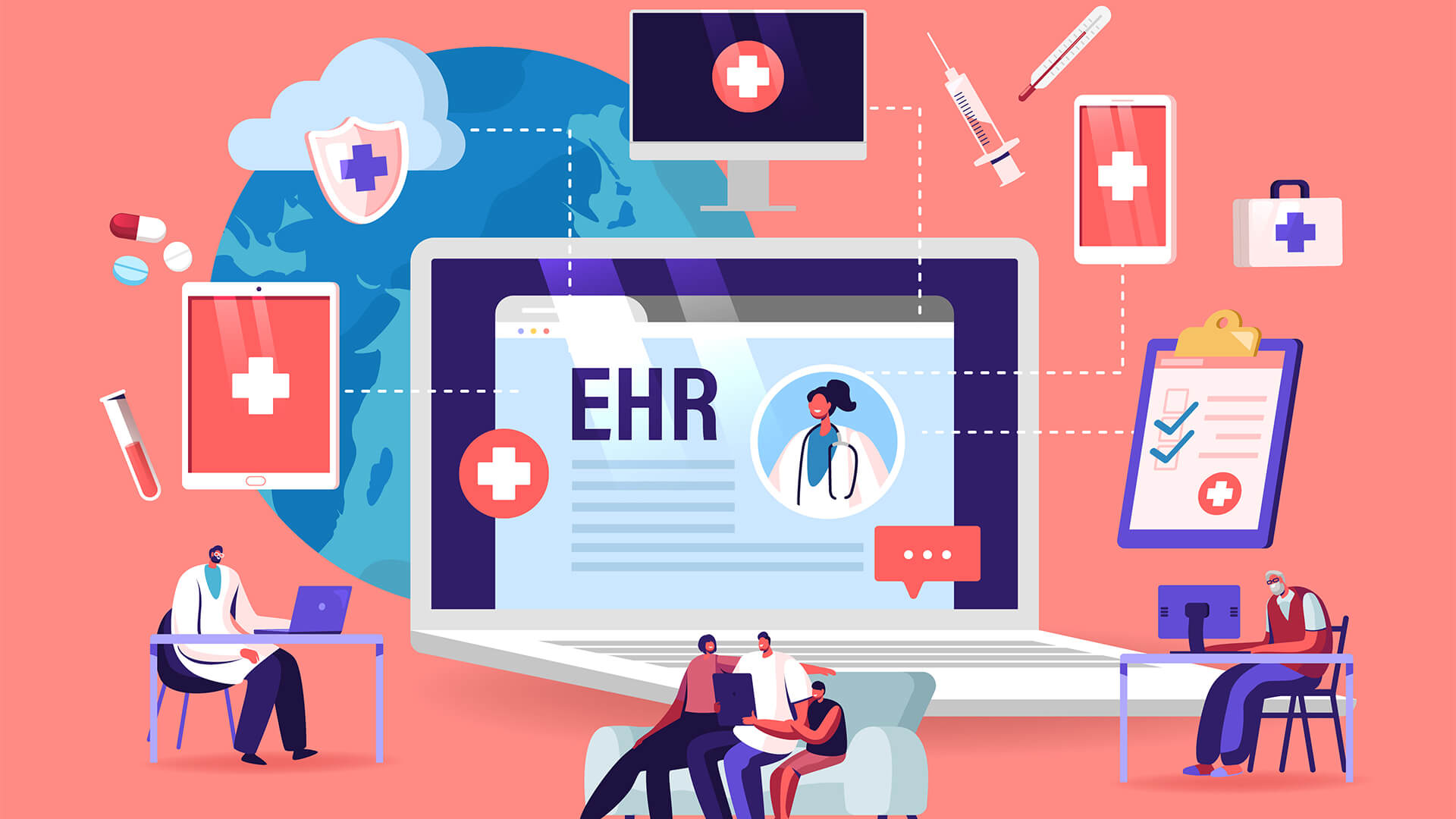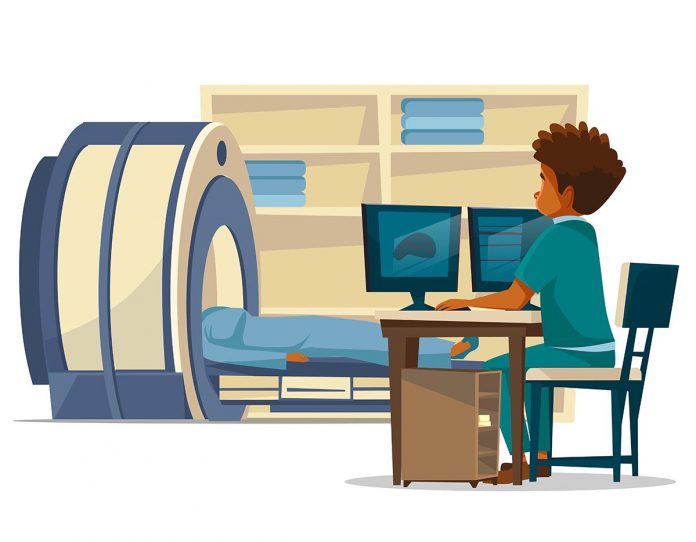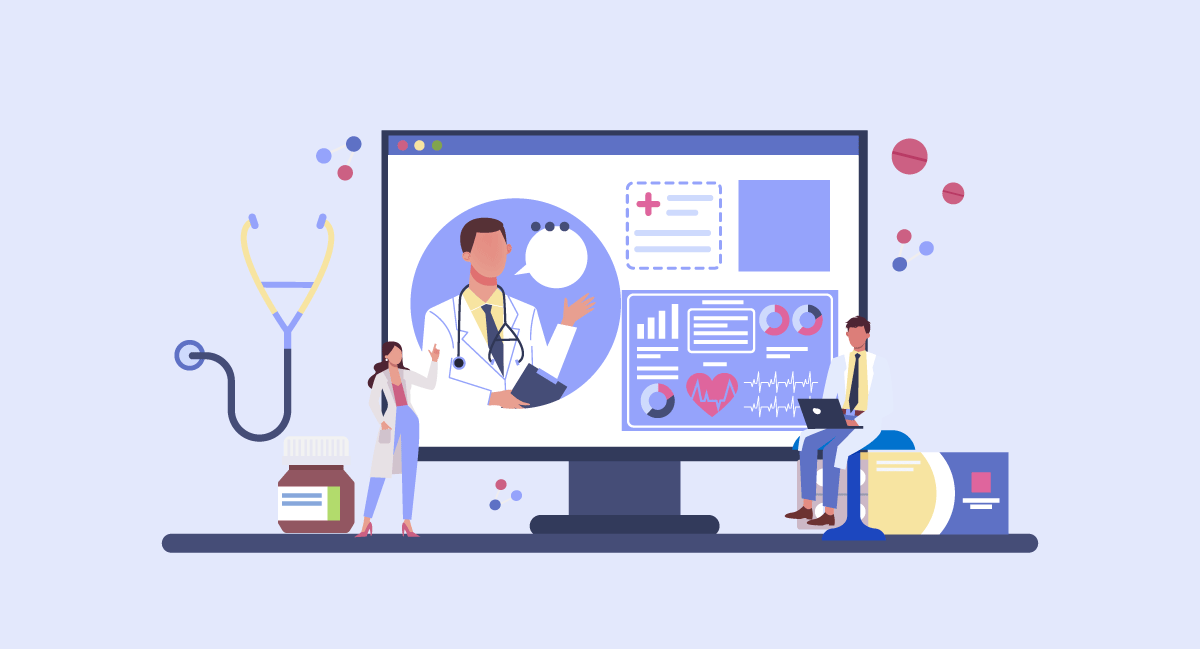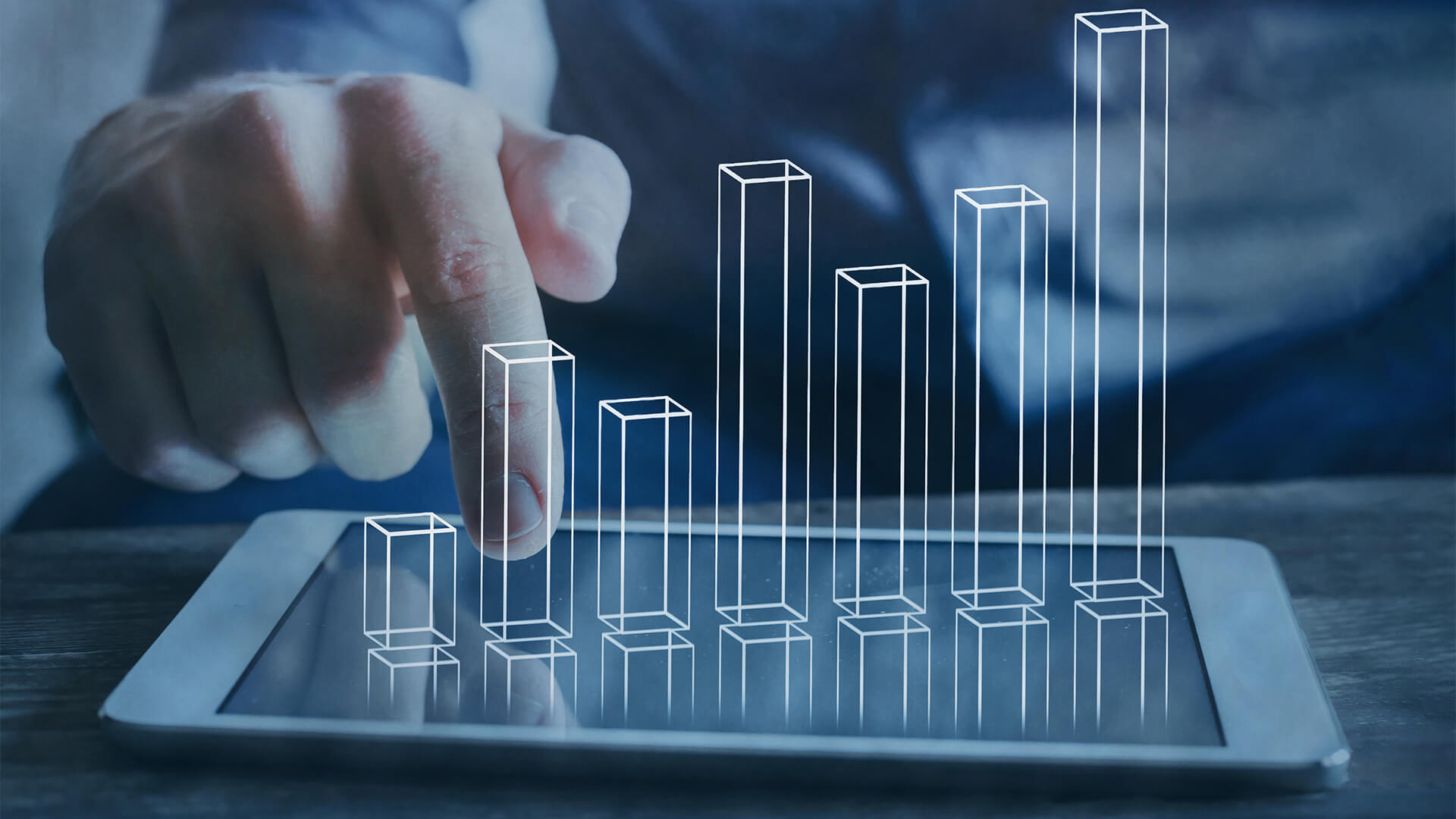Digital transformation has swiftly become a reality in all aspects of business, including healthcare. The necessity of digitizing health services has been highlighted by 2020 and the COVID-19 pandemic. Both public and commercial healthcare providers face new problems and must explore new technological options.
Technology will continue to permeate all parts of healthcare, from staffing and facility administration to patient care and diagnostics. Healthcare businesses can now select from various healthcare software and customize it to their specific requirements. In this piece, we will examine 5 different types of software used in healthcare industry that have recently acquired prominence and will undoubtedly maintain their position in the future.
I. What Type of Software is Used in Healthcare?
Different types of software used in the healthcare industry are improving efficiency, improving patient care, and streamline procedures. The following are some popular types of software used in healthcare that can answer the question “what software is used in healthcare”: Applications for modern healthcare software that promote better patient care, operational effectiveness, and increased interprofessional communication.
| Electronic Health Record | Store and manage patients’ medical records electronically, including medical history and test results. |
| Practice Management | Streamline administrative tasks in medical practices, such as appointment scheduling and billing. |
| Medical Imaging | Capture, store, and analyze medical images (X-rays, MRI, CT scans) for accurate diagnosis. |
| Telemedicine | Facilitate remote consultations between healthcare providers and patients through video conferencing. |
| Pharmacy Management | Support medicine-related duties such as medication inventory management, prescription processing, and drug interaction checks. |
| Laboratory Information | Manage and track samples, tests, and results in medical laboratories for improved efficiency. |
| Health Information Exchange | Enable secure sharing of patient health information between different healthcare organizations. |
| Decision Support | Assist healthcare providers in making clinical decisions with evidence-based recommendations and alerts. |
| Patient Portal | Allow patients to access health information, schedule appointments, and communicate with healthcare providers. |
| Medical Billin | Automate billing and claims submission process for efficient financial management in healthcare settings. |
Healthcare Industry in TECHVIFY:
II. 5 Different Types of Software Used in The Healthcare Industry
1. Electronic Health Record (EHR) Systems

Electronic Health Record (EHR) systems have taken center stage in contemporary healthcare facilities, ushering in the end of the era of paper-based medical records. These software programs provide a thorough and secure approach to electronically organizing, storing, and accessing patient medical information. EHR systems allow Healthcare workers immediate access to patient’s medical histories, lab data, prescriptions, and treatment plans. This increases the effectiveness of healthcare delivery and boosts patient safety and provider coordination.
2. Picture Archiving and Communication Systems (PACS)

Medical imaging management has undergone a radical change because of Picture Archiving and Communication Systems (PACS). These cutting-edge software programs allow storing, retrieving, and sharing various medical pictures, including X-rays, CT scans, MRIs, and ultrasounds. With PACS, medical professionals may easily view and examine diagnostic images, facilitating quicker and more precise diagnoses. The workflow of radiologists and other professionals has been expedited by this technology, improving patient outcomes.
3. Health Information Systems (HIS)

The term “health information systems” (HIS) refers to a wide variety of software programs vital to managing different facets of healthcare organizations. HIS enhances the efficiency of healthcare operations across billing, scheduling, and patient administration. Additionally, HIS promotes seamless communication between various organizational units by assisting healthcare facilities in maintaining accurate records and adhering to regulatory regulations.
4. Clinical Decision Support Systems (CDSS)

Medical practitioners can make educated clinical decisions with the help of Clinical Decision Support Systems (CDSS), which are effective tools. CDSS provides research-based insights and prospective treatment alternatives by examining patient data and utilizing medical expertise. This improves diagnostic precision, lessens medical errors, and improves patient care results. By providing doctors and other caregivers with the newest medical knowledge, CDSS keeps them up to date on the most recent findings and recommendations for care.
5. Telemedicine Software

In remote and underserved places, in particular, telemedicine has shown itself to be a game-changer. Through video conferencing and communication capabilities, telemedicine software makes it possible to get healthcare consultations and services virtually. With the ability to communicate with healthcare specialists from the safety of domiciles, patients can save needless travel and wait times. Additionally, telemedicine provides remote diagnosis, chronic disease monitoring, and post-operative care, improving patient outcomes and increasing accessibility.
III. Why is The Use of Information Systems in Healthcare Important?
| Efficient Data Management | Information systems manage vast amounts of patient data, enabling secure access to medical histories, diagnoses, treatment plans, and test results. |
| Improved Patient Care and Safety | The integration of software applications has improved communication among healthcare personnel, resulting in speedier diagnosis, fewer medical errors, and more patient safety. Electronic prescribing systems are extremely effective at preventing drug mistakes and drug interactions. |
| Enhanced Decision Support | Medical information systems provide decision support tools to specialists, allowing them to make evidence-based and well-informed decisions for their patients. For better treatment selection, CPOE systems provide real-time notifications and clinical guidelines. |
| Streamlined Administrative Processes | Software-based systems optimize administrative duties like billing, scheduling, and inventory management, decreasing paperwork and errors and freeing up suppliers’ time to focus on patients. |
| Facilitation of Telemedicine | Information technology systems make it possible for specialists who provide remote treatment, consult with and monitor patients in rural or remote places, and ensure healthcare services. |
Conclusion
In conclusion, these 5 different types of software used in healthcare industry have become the backbone of the modern healthcare industry. They have improved data management, decision-making, and patient care while also streamlining administrative processes. By embracing these technologies, healthcare professionals will be able to provide better care, enhance patient outcomes, and adapt to the ever-changing healthcare scene.
As technology advances, we could anticipate even more inventive software solutions to define the future of healthcare. Accepting these improvements would definitely pave the way for a more efficient, patient-centered, and accessible healthcare system for all. The increasing collaboration between technology and healthcare is poised to build a healthier planet for future generations.
TECHVIFY – Global AI & Software Solution Company
From Startups to Industry Leaders: TECHVIFY prioritizes results, not just deliverables. Accelerate your time to market and see ROI early with high-performing teams, AI (including GenAI) Software Solutions, and ODC (Offshore Development Center) services.
- Email: [email protected]
- Phone: (+84)24.77762.666





